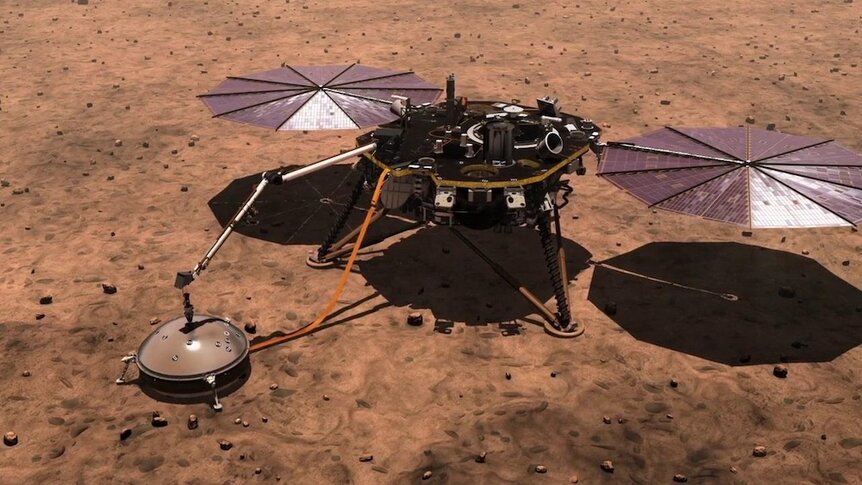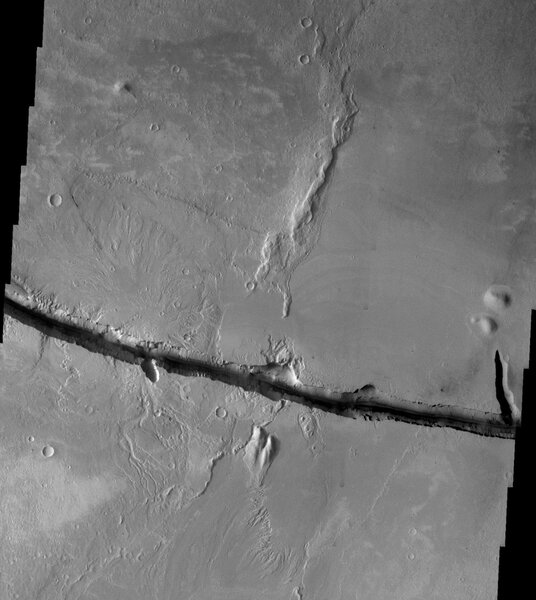Create a free profile to get unlimited access to exclusive videos, sweepstakes, and more!
Mars Lives! New evidence reveals the Red Planet is still volcanically active
Mars continues to surprise and delight.

We owe a lot to Earth being geologically active. Beneath our feet, massive tectonic plates float on an underground ocean of magma. On long enough timescales, the internal machinations of the planet cycle water and rock. They build up mountains, form new oceans, regulate the planet’s temperature, and might even be crucial for the emergence of life. Sometimes, however, geological activity can be a bit of a bummer.
Our planet’s geological interactions also lead to earthquakes and volcanoes, both of which can have violent results. Just take a look at Dante’s Peak and know that even our disaster movies pale in comparison to our planet’s most powerful temper tantrums. While some of us may wish that our planet was dead inside, the better to avoid flowing magma or destructive earthquakes, we would regret it in the long-term. Without the cycling of the planet’s interior, core convection stops, and we would lose our magnetic field. That’s what happened on Mars billions of years ago, and it’s one of the reasons the Red Planet is so desolate today. Or so we thought.
Instead of the cold dead rock we know and love, Mars might remain at least a little bit geologically active, according to a recent study published in the journal Nature Astronomy. That study is based on data from NASA’s InSight lander, specifically the SEIS seismometer which measures tectonic activity on the Red Planet. Since February of 2019, researchers from ETH Zurich in collaboration with an international team of scientists, have used SEIS to record more than 1,300 marsquakes and the results revealed something unexpected.
RELATED: Whoop whoop whoop! NASA InSight 'hears' an asteroid impact on Mars
Most of the tectonic structures on Mars are inactive, little more than bones left over by a once living planet, but there is seismic activity. In fact, the volcanic activity on Mars used to be so powerful that the planet built-up the largest volcano in the entire solar system. Olympus Mons is the largest mountain on Mars and the remains of a volcano approximately three times as tall as Mount Everest. Now we have evidence that tectonic activity on Mars is ongoing and tracing the origin of those quakes led researchers to a single source responsible for more than half of all Martian tremors: the Cerberus Fossae.
In Greek mythology, Cerberus is a massive three-headed dog who guards the gates of the underworld, and Mars took that assignment literally. Cerberus Fossae translates from Latin to the Rifts of Cerberus and identify a collection of fissures caused by Martian faults pulling apart. The characteristic low frequency of quakes coming from the Cerberus Fossae suggests a warm source which could be driven by liquid magma beneath the surface.
In addition to the seismic data gathered by InSight, researchers visually observed surface deposits of dark dust which could be an indication of relatively recent volcanic activity. Recent, of course, is relative when talking about geological processes. It’s believed the planet may have had active volcanic activity on the surface as recently as 50,000 years ago, little more than a blink on geological timescales. These new findings are consistent with ongoing magmatic activity 30 to 50 kilometers beneath the surface.
So what? A quake or even a volcano on Mars can’t possibly impact us here on Earth, but understanding their place in the larger Martian story absolutely could. To date, Mars is the only place in the solar system aside from Earth of course, where we can get consistent seismic data. Our attempts to land instruments on the other rocky planets have not gone well — though we should keep trying — and the outer planets don’t readily invite surface landers, being made of gas and all. That makes Mars our primary extraterrestrial quake and volcano research outpost.
It might also provide some insight — no pun intended — about the future of our own planet. Mars once looked a lot like Earth, with liquid water, a magnetic field, and an active geologic interior. Understanding how it has evolved over the last few billion years could help predict Earth’s eventual fate or provide a better understanding of how planets work on the inside.
It’s possible that we’re observing the last gasp of a still-dying planet, or we could be seeing the preamble to a forthcoming eruption. Someone better go check on our robots, things might be heating up on Mars.




























